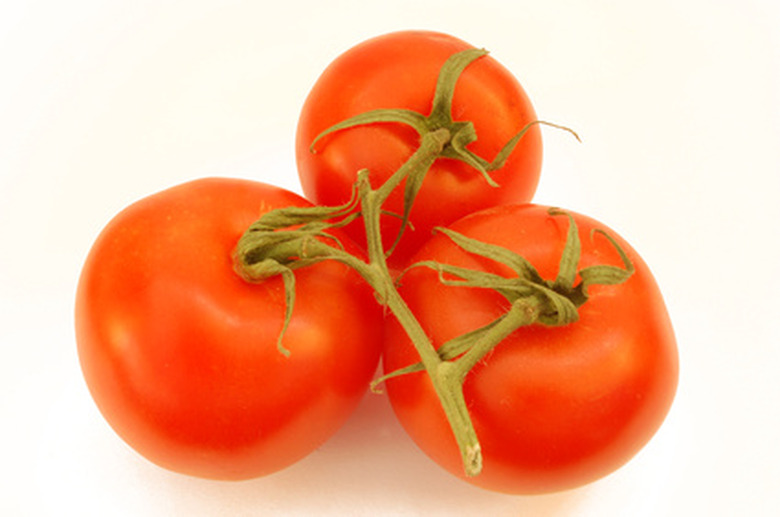Tomato Plant Scientific Names
Tomatoes are New World plants. They were unknown to Europeans before Columbus brought them back at the end of the 15th century. They had a variety of American Indian names and it is one of these Indian names that gives us the English word "tomato." The German name for "wolf peach" gives us the scientific name "lycopersicum."
Step 1
The tomato plant is unusual in that it has at least three scientific names. Solanum lycopersicum is the most common, and it places the tomato (correctly) in the nightshade family (Solanaceae), along with tobacco, the potato, the eggplant and belladonna (deadly nightshade). The plant was given this name by Carl Linnaeus in 1753, but the name was challenged within 20 years, and again slightly over a century later. It was not until modern DNA-testing techniques were invented that Linnaeus' original classification was verified to be correct. Although this is the commonly agreed-upon name in most scientific publications, the later names are still used by some authorities and many seed catalogs.
Step 2
Lycopersicon esculentum
Step 1
In 1768, Philip Miller renamed the tomato plant Lycopersicon esculentum. This might have been largely a marketing ploy–people were not comfortable with a food in the deadly nightshade family. Although this name has long been known to be incorrect, it is still found in the publications of such venerable organizations as PubMed and Perdue University. Sometimes the correct name (Solanum lycopersicum) is listed as a "synomym" and sometimes not. The Lycopersicon esculentum name is firmly established in the literature and even appears in several dictionaries.
Step 2
- The tomato plant is unusual in that it has at least three scientific names.
- Sometimes the correct name (Solanum lycopersicum) is listed as a "synomym" and sometimes not.
Lycopersicon lycopersicum
Step 1
In 1881, Gustav Karl Wilhelm Hermann Karsten introduced the name Lycopersicon lycopersicum. This name is no longer found in scientific references, but it is often called the "scientific name" in seed company literature. If you do an Internet search for Lycopersicon lycopersicum you will find links to thousands of seed companies. This confusion of scientific names is reflected in a confusion in popular culture about tomatoes. For years there was a question about whether tomatoes were fruits or vegetables. In culinary terms they are a vegetable (more often eaten in the main course than in the desert course), but in biological terms they are a fruit because they have seeds. In 1893, the U.S. Supreme Court "settled" the matter by declaring the tomato a vegetable. Tennessee lists it as the state vegetable, Alabama lists it as the state fruit, and Arkansas lists it as both the state fruit and the state vegetable.
Step 2
- In 1881, Gustav Karl Wilhelm Hermann Karsten introduced the name Lycopersicon lycopersicum.
- This name is no longer found in scientific references, but it is often called the "scientific name" in seed company literature.
